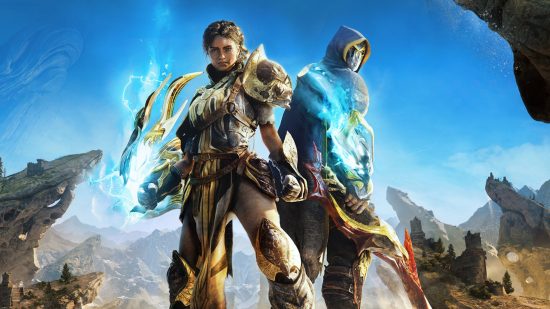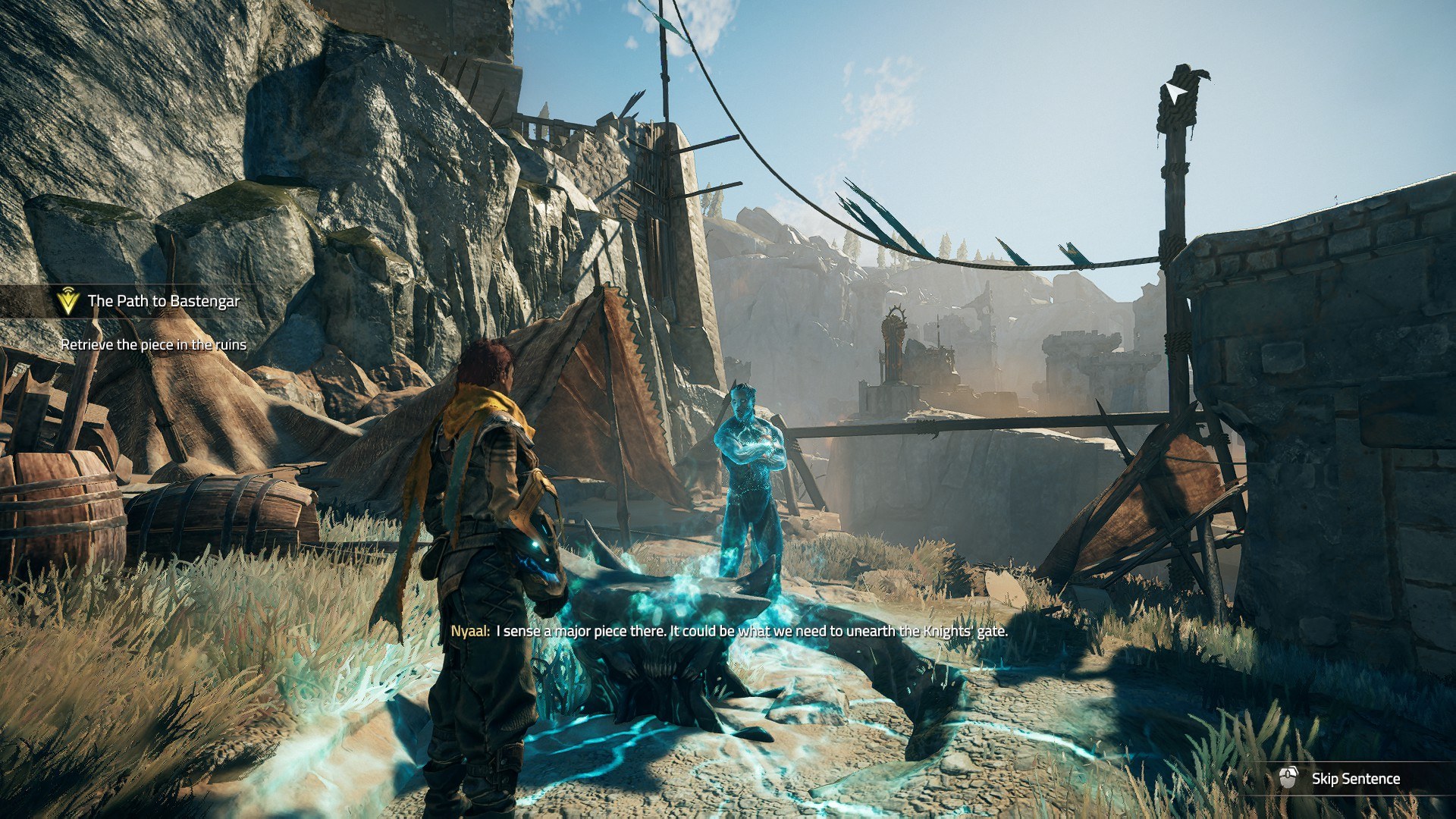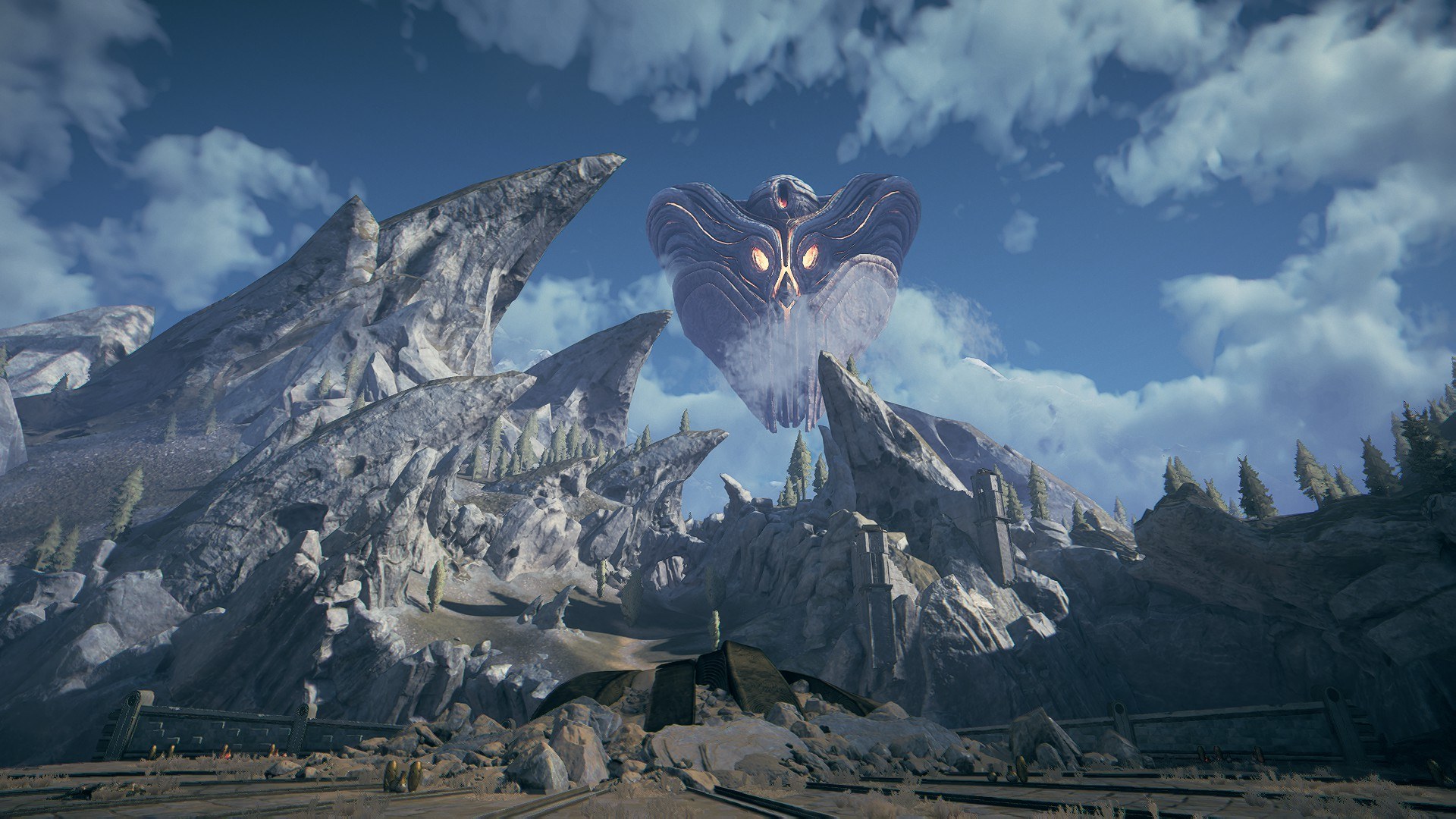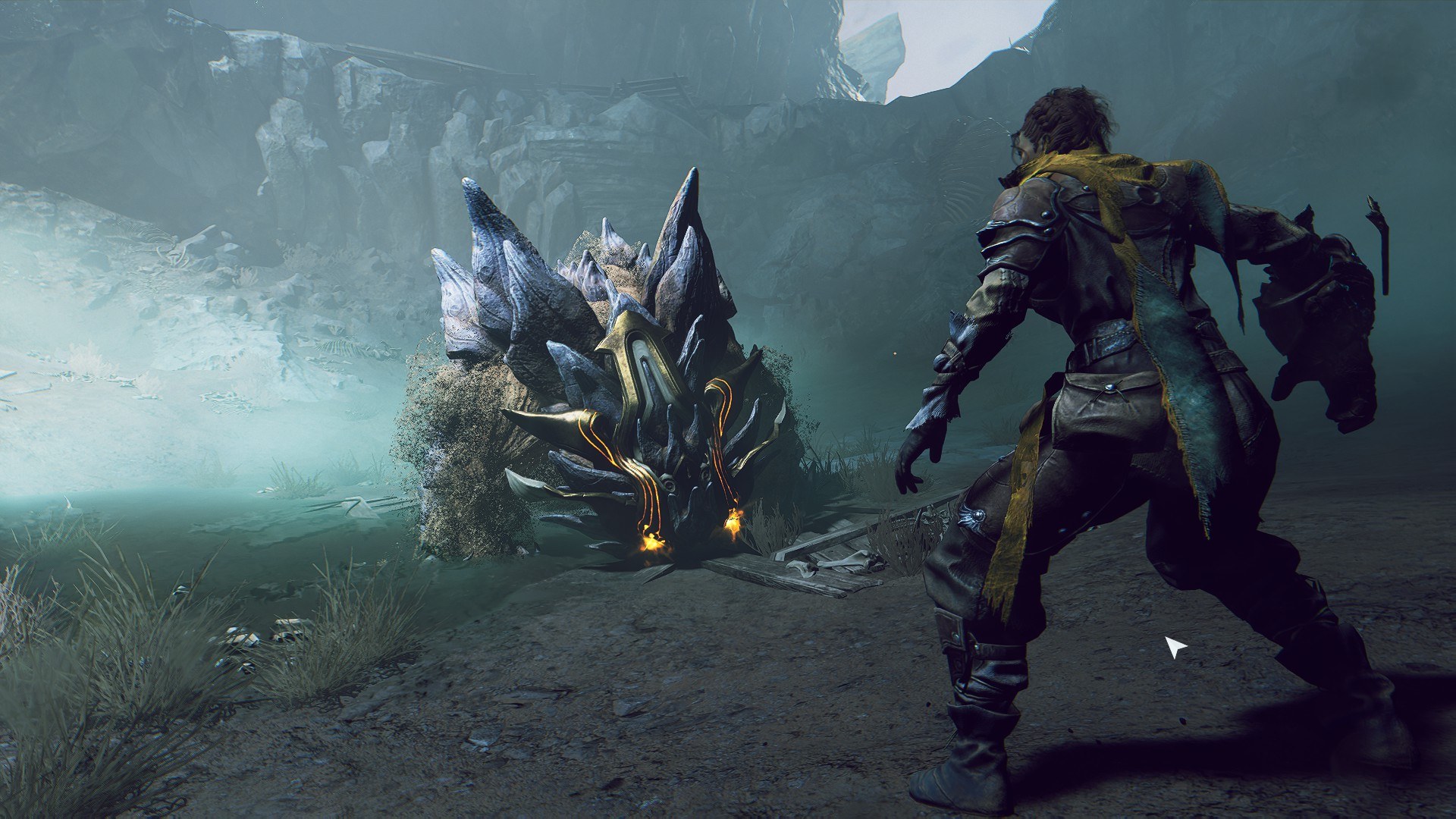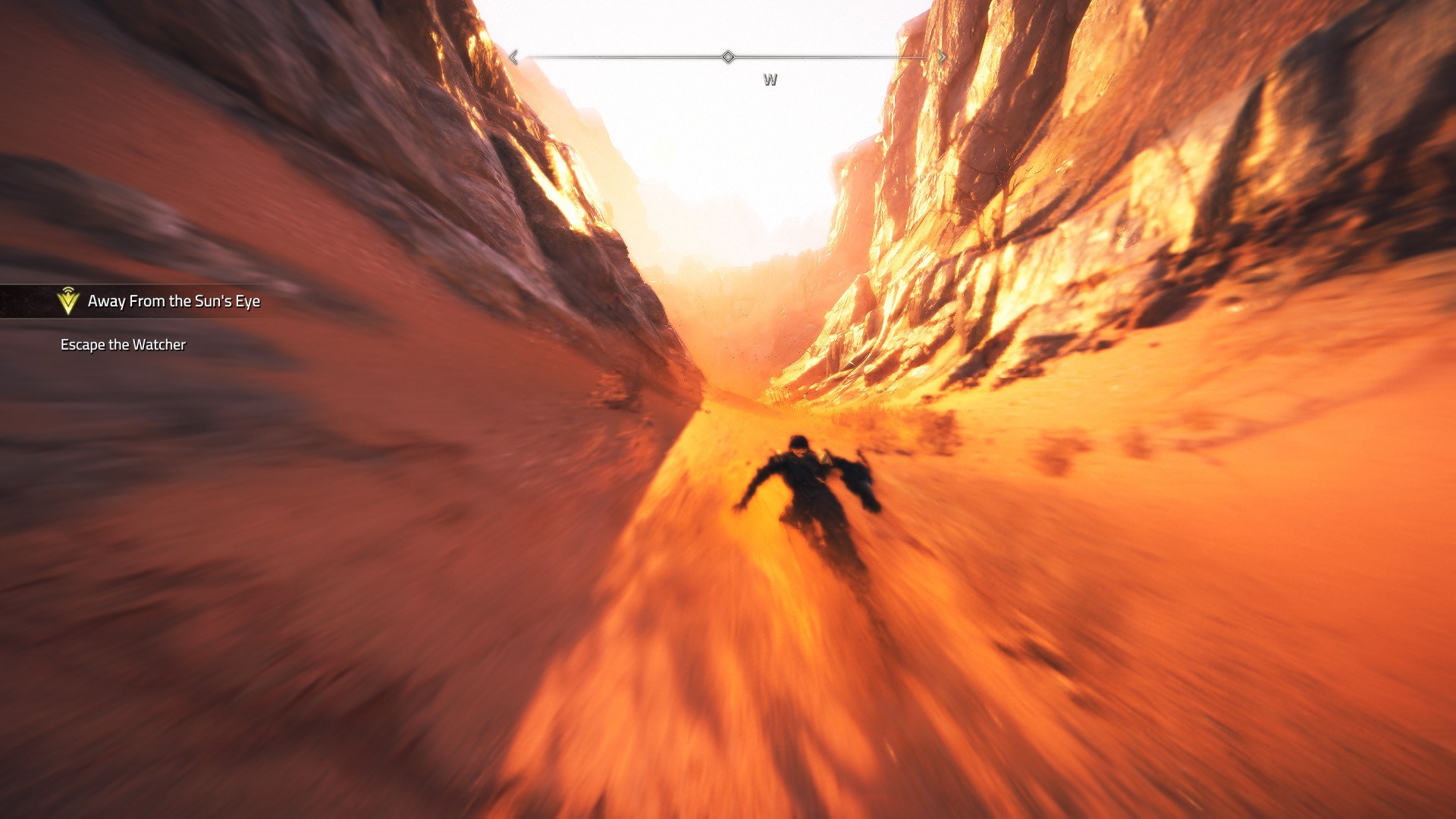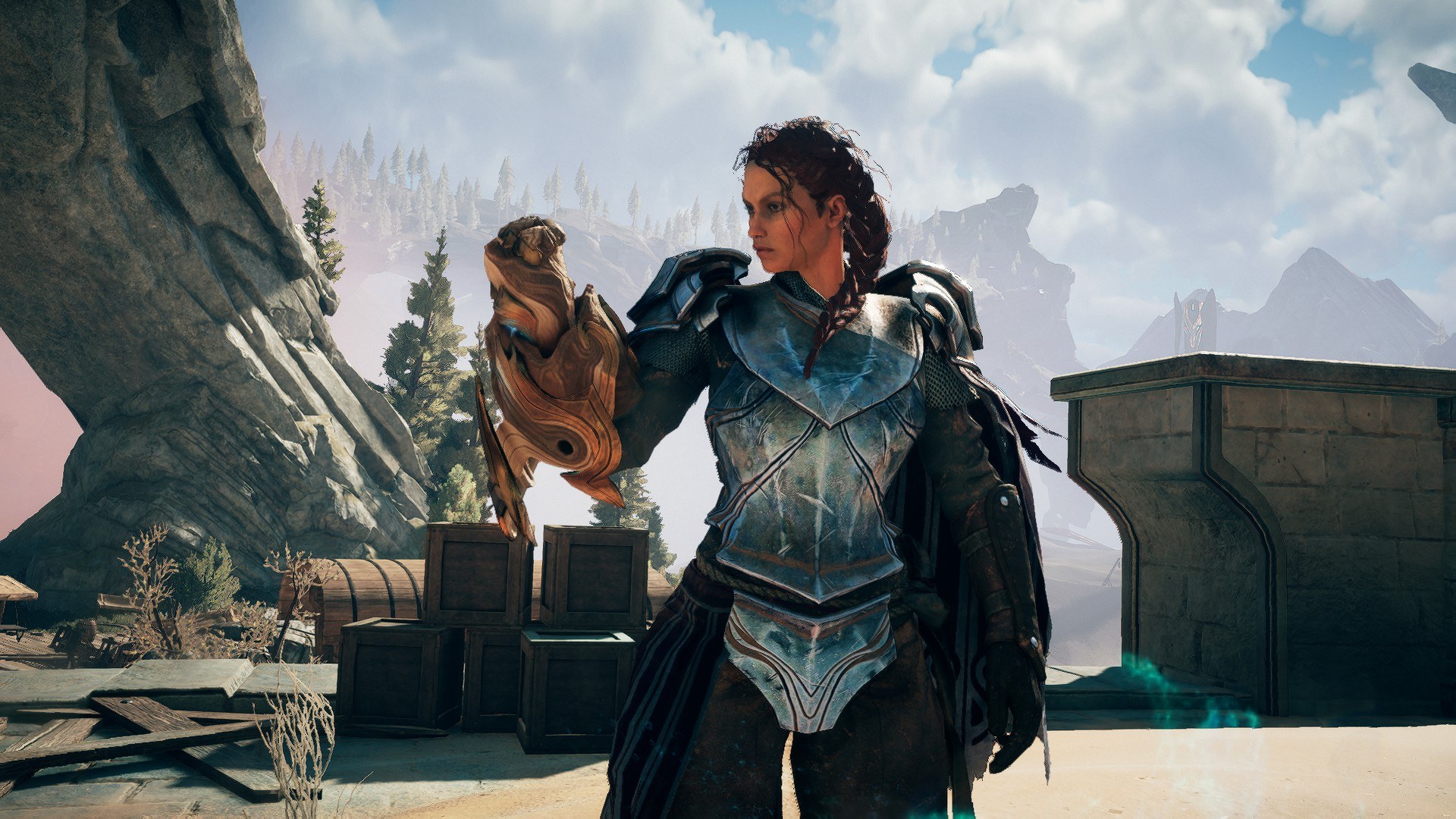Our Verdict
Atlas Fallen’s superb combat, intruiging world, and fluid traversal make up for a play-by-numbers narrative. Thankfully, simple things like surfing the sands of a ginormous desert wasteland and taking on behemoth beasts mean I can enjoy the game for what it is instead of what it could have been.
Take the world-building of Horizon, the landscape of Dune, the combat of classic God of War, and you have Atlas Fallen. While the new Deck13-developed action game doesn’t quite match up to the same level of polish or depth as the games it’s perhaps inspired by, our Atlas Fallen review finds it to be a challenging RPG adventure that’s hard to put down.
Set in the world of Atlas, its inhabitants mine endlessly for Essence, a magical substance used to appease the Sun God, Thelos. As a result, the once-green land has turned into a vast desert with beasts now roaming around every corner. Upon transporting a shipment of Essence, you – an Unnamed – come into contact with a gauntlet that offers the power to control sand, then are quickly introduced to a mysterious Avatar-like being called Nyaal. From here, it’s up to the pair to rise against Thelos and help free the people of Atlas.
Like many journeys of this magnitude, it all starts with a character creator screen. While it’s straightforward, it has everything I need to stamp my own personality, from hair and skin tone to outfit color, yet not so much that I lost hours deciding my eyebrow length. There are also 12 pre-made designs to choose from.
Within the first couple of hours, I was taking on monsters (known as Wraiths), conjuring structures from underneath the land, and sand sliding through winding valleys while escaping armed forces. Outside of some light platforming, inventory management, and fetch quests, this is what makes up Atlas Fallen – and it works well. Sand sliding is cool and quick, which meant I was rarely using fast travel. Yes, some of the quests are busywork, but the core components of traversal and combat are instantly enjoyable.
Atlas is split into three open-world areas, each of varying size and scope. Amid the sun-drenched sand dunes are hunters and warriors from different tribes, all with apparel resembling the Horizon series… or dare I say Godfall. Considering I don’t possess the most powerful of PCs out there, gameplay ran pretty smoothly throughout. Little things like the odd moment of slowdown and a 20-second load time after a game over were small sacrifices to pay in return. It won’t win any beauty contests when compared to what else is out there, but that doesn’t stop it from being an intriguing setting to explore.
Moving away from the developer’s soulslike gameplay in The Surge, Atlas Fallen is a third-person action RPG that sits nicely between the classic hack-and-slash of the earlier God of War games and the satisfying parrying of Sekiro: Shadows Die Twice. The weapon choices are a Dunecleaver for heavy damage, a Sandwhip for shaping sand into weapons, and a Knuckledust for fighting barehanded. Two of these are used as primary and secondary weapons, though I stuck to the former for the majority of my playtime, having preferred the Dunecleaver and Sandwhip in combination.
Combat revolves around generating momentum, which you do by hitting and defeating foes. Once you’ve produced enough, your weapons can ascend, meaning they grow in size and power. It’s a double-edged sword, as momentum will both increase the damage you deal and the damage you take, rewarding risky play but also punishing it just as easily. Whenever an enemy attacks, either a blue or red flash will appear. Blue is unavoidable, whereas red you can parry – a necessity to beat this game. If done enough times, the enemy will become crystalized, freezing them completely and offering up a chance to deal critical hits.
As attacks can be quite unrelenting, getting parrying down makes Atlas Fallen a much better experience that still kept me on my toes no matter how confident I became. It’s tough, yes, but very manageable. I died a fair few times during my 11-and-a-half hours with the campaign. That never put me off, though. I instantly wanted to jump back in, learn from my mistakes, and take down whatever malevolent monster was thrown my way. Only once did I need to grind so that I could level up accordingly. For anyone looking to quench the absence left by Elden Ring, hard mode will certainly satisfy those needs. Co-op is also available from beginning to end.
Air combat is another aspect that grows in importance the further the campaign progresses, with an air dash move spearheading this, similar to how you should never touch the ground in Marvel’s Spider-Man. This continues into the platforming and sand sliding too, with you often having to chase beams of light from sealing totem to sealing totem to solve a puzzle. All of this is superb. I just wanted more.
Defeating enemies grants essence dust, which you can use to level up armor or forge Essence Stones – trinkets that grant powers and effects in combat. There are four types available: damage, tricks, momentum, and survivability. I leaned towards damage, utilizing the likes of Biting Sandstorm to send out obliterating tornadoes and Ruthless Advantage to capitalize on crystalized foes. Tenacious Parry essentially serves as the Mimic Tear of Atlas Fallen, greatly increasing the duration of my parry and making fights much more winnable.
Nyall and the protagonist are the linchpin to Atlas Fallen’s story, something that starts well and poses some interesting questions but ultimately brings nothing new to the table. Essentially, it’s a play-by-numbers narrative that never dives deep into the interesting split kingdom dynamic it presents.
What doesn’t help is that a lot of the voice acting lacks some edge. The only exception to this is the commanding Khendra of Bastengar (voice by Angel Maurnaé) who gets all the best lines and is someone I would happily follow into battle.
Atlas Fallen has plenty to offer fans across different genres, bringing together a superb hack-and-slash combat system in an intriguing open world littered with platforming challenges and simple puzzles that never overwhelm. Even with the disappointing narrative, Atlas Fallen does enough that I left not only satisfied but wanting more.
